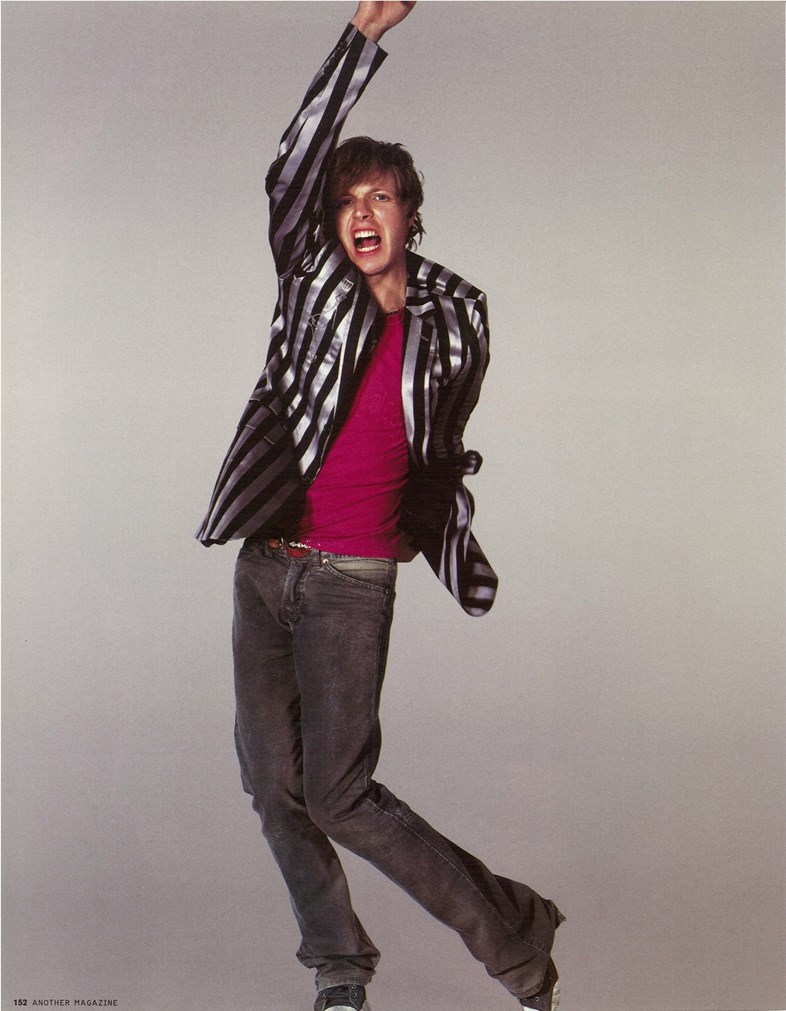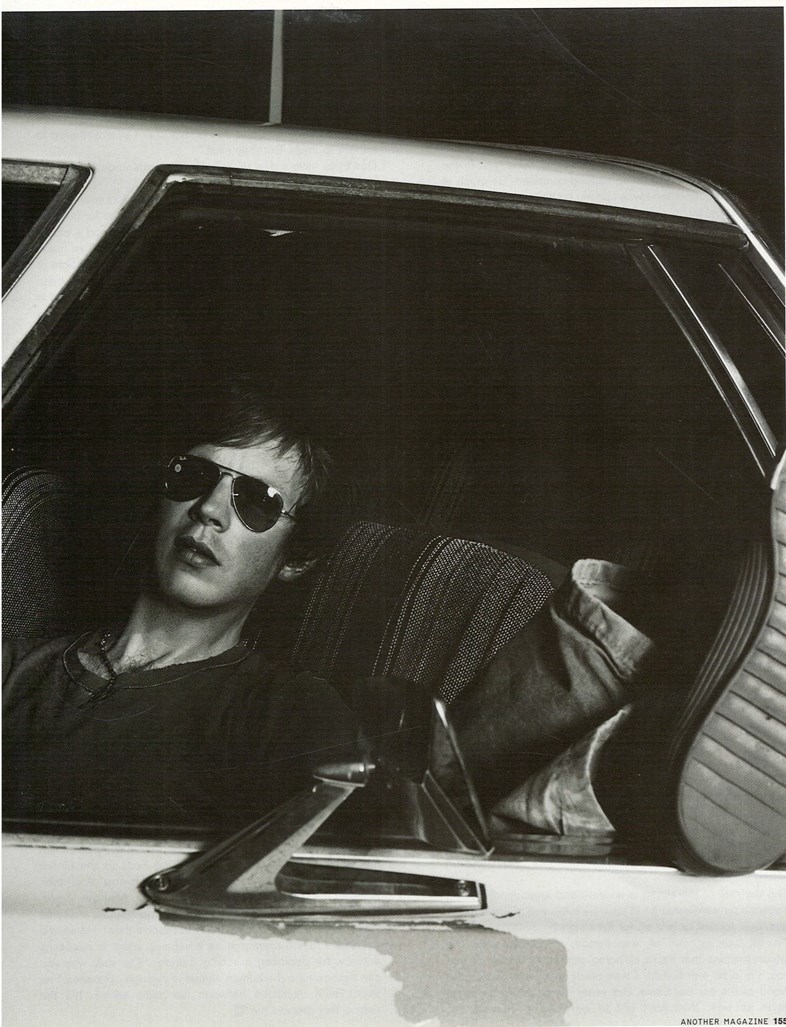To coincide with the release of his latest album, Colors, the celebrated musical chameleon talks us through the minutiae of his craft
- TextDaisy Woodward
In the 24 years since Beck meandered onto the music scene with his lo-fi hit single Loser, the Los Angeles-born artist has established himself as one of the most able musical shapeshifters of our time. To date he has released 13 studio albums, each an experiment in sound and genre-merging – from his early brand of anti-folk to 1996’s masterful Odelay, dubbed “a showy post-modern marvel” by Pitchfork; from the beautifully woeful Sea Change (2002) to his endeavours in funk and hip-hop for 2006’s The Information. Not to mention 2012’s Song Reader, comprised only of sheet music for listeners to interpret themselves.
This month marks the release of Beck’s latest album, the joyfully upbeat Colors, and with it the addition of a new string to the musician’s bow. “I made it with Greg Kurstin, my keyboard player from Sea Change, who’s also a composer and producer,” he tells Another Man over the phone. “We got together about four or five years ago and started writing songs and gradually it evolved into a big body of work. This is the greatest hits.” Their aim, he explains, was to create an album that embraced a more traditional, sonically detailed approach. “I’ve made records that have taken a lot of time and energy, but that’s been more about getting an energy and a rawness. This was the opposite – trying to get more clarity and perfection, to create something finely wrought in its craftsmanship.”
There’s no doubt that attentive listening to Colors reveals a rich depth of sound, but the first thing you notice upon hitting play is its sheer euphoria: it’s an album that, more than anything, makes you want to dance. Which is just what Beck intended. “The feeling of it is so specific, so the challenge was the writing,” he says. “I had to relearn a lot of things and discover new ways of composing. We worked on it assiduously to make it sound effortless – for me, it’s much more difficult to make a dancefloor smash than a heartfelt ballad. In some ways it was about turning off my mind and going more from some kind of physical place, with more heart and feeling.” Once again, Beck’s relentless creative curiosity has paid off, Colors serving as a masterclass in the discipline of music-making. Eager to delve deeper into the musician’s practice, we quizzed him on the key ingredients to skilled songwriting.

1. Learn how to master the minutiae of your craft
“If I go to a museum, I’m really drawn to the artworks that I know took somebody a thousand hours to do, using the utmost technique and craft. That’s the moment where I’m at creatively; everything on this record is an instrument that was played live, there’s no programming. If you hear 16 vocals all perfectly stacked up it’s because we spent days singing them and getting them right. It’s not like you add water and you have instant music: it’s the decades that Greg spent studying jazz, for example, so that when he plays that arpeggio, all that time exists within it; it’s the coming together of lots of different experiences into a rich tapestry. Not that I have anything against the way that a lot of modern music is made – with plugins and programmed beats – I just wanted to hear something that had human toil in it.”
2. Turn to the classics for inspiration
“In a well-crafted song, something has to fly. If you compare it to building a machine, you’re not making something to put in your garden and look beautiful, you’re looking for something that can actually take off and go into the stratosphere. The classic, perennial songs are the ones that have wings; that become part of your everyday life, whether it’s the Beach Boys’ Pet Sounds, the Beatles’ Sergeant Pepper, Michael Jackson’s Thriller or Peter Gabriel’s So. They’re very rare kinds of songs – and in some ways the process of making Colors was a meditation on them, on creating magic in music.”

3. Channel your emotions into song
“My records usually reflect where I was two or three years before the record came out – at the writing stage. The songs in Colors very much represent how I felt while we were recording them; it wasn’t anything I was putting on. Although the writing itself was a struggle, in terms of the craft and fine-tuning that went into it, the feeling, emotion and the buoyancy you hear is real.”
4. Don’t be afraid of abstract lyrics – even if they’re misinterpreted
“I come from a background of poetry and spoken word and while I understand that song lyric writing is a whole different discipline – especially for popular songs – I’m interested in the intersection of that craft with something that draws more from the written word, from poetic forms and different schools of modern writing. Sometimes that can result in lyrics that are a little more abstract, that aren’t as narrative or explicit in their meaning, but that’s the beauty of it. You get to paint pictures of environments or feelings or moods that hopefully evoke a recognisable mindstate. But that can lead to a bit of a disconnect sometimes: I’m always fascinated and horrified by how half of my lyrics on the internet are completely mistranscribed and misunderstood. For Colors, however, I took a more simple approach, along the lines of the Beatles' Love Me Do.”

5. Embrace experimentation and unexpected combinations
“When I started out I thought that putting things together that weren’t supposed to go together musically felt fresh and transgressive, and hopefully, sometimes, like a bit of a revelation. I saw antecedents of that ‘shock of the new’ in so many other forms of music from other times – like when you have Bob Dylan taking Appalachian folk music and combining it with beat poetry, or the Beatles taking string quartets and putting them together with 60s pop music, or the Clash putting hip-hop and dance beats with punk. There are a million examples of that, which as I kid I was always drawn to, and I guess that fascination has just continued.”
Colors is out now.











